We performed two quantitative and two qualitative tests to determine how the prototype compared to a normal NFL football helmet.
Drop Test:
- Helmets were dropped from a test structure we designed and built that is six feet high (diagram below)
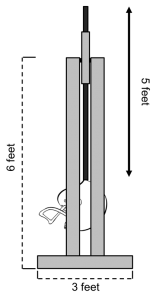
- A PVC pipe was used to minimize translation and rotation of the helmet so that accelerations are primarily vertical
- Four accelerometers were placed in the back of the helmet to simulate the experience of the head
- Helmets were dropped onto concrete so that the gound would not absorb much of the impact forces
- Accelerometers measured accelerations as the helmets hit the ground and bounced upwards
- Each helmet was dropped ten times
- Results:
- We analyzed the accelerations experienced by the helmets as they hit the ground and measured the total time is took for the helmets to decelerate
- The desired outcome of this test was that the time durations would be longer for the prototype because this would indicate less force being translated to the wearer per unit time
- In the graph below, it can be seen that the prototype had generally larger time durations and overall showed a 25% increase in the average duration. Furthermore, a t-test showed statistically significant results with a p-value of .0004
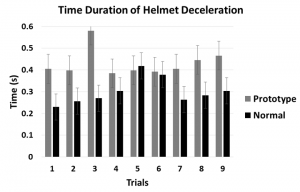
Pendulum Test:
- Using the same test structure as before, a pendulum was made with a pole and an 8 pound weight (see diagram below)
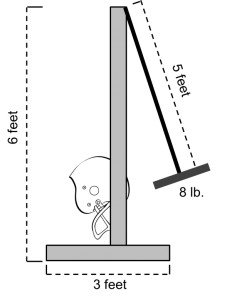
- The helmets remained stationary while the pendulum was bounced off the front
- The distance that the pendulum bounced off of the helmets was analyzed using ImageJ software to measure the arc length of the rebound
- The results over ten trials were analyzed
- Results
- The desired outcome of this test was that the rebound distance of the pendulum would be smaller, thus indicating a greater absorption of the impact forces
- In the bar graph below it can be seen that the prototype had much smaller rebound distances on average (approximately 50% smaller), indicating that it absorbed forces better than the normal football helmet. A t-test showed statistically significant results with a p-value of significantly less than .0001
Qualitative tests were also used to analyze the durability and the comfort of the helmet:
- Durability assessment – after approximately 50 drop tests and 20 pendulum tests, the prototype showed no signs of structural damage, indicating that it is sufficiently durable
- Comfort assessment – ten people were surveyed to rate the comfort of the helmets on a scale from one to ten. Their results were averaged and the bar graph below shows the mean and the standard deviation. The prototype was considered more comfortable than the normal helmet, scoring 6.8 and 4.6 respectively.
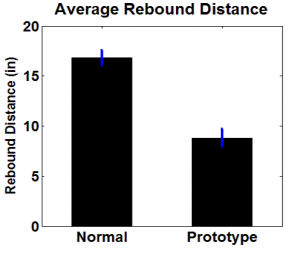
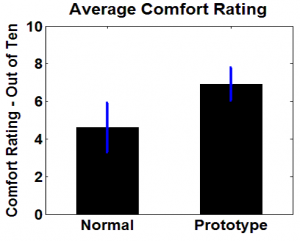
Speak your mind